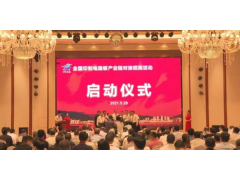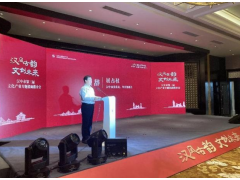Printing is one of the four great inventions in China. As an essential material for printing, ink plays an irreplaceable role in the development of the printing industry. According to legend, the earliest ink appeared in my country as early as the Yellow Emperor, but according to historical records, it was Wei Dan in the Wei and Jin Dynasties who invented ink in my country. In the Yuan Dynasty, Chinese printing was introduced to the West. Around 1440-1450, German J. Gutenberg invented lead alloy movable type printing, improved ink-making technology, and created a coloring material made of oily binder and pigment, that is, modern ink. At the beginning of the 19th century, European printing and modern ink technology were introduced into my country. Since the Qing Dynasty printed banknotes in Beijing Baizhifang, the earliest ink industry was born in my country. At the beginning of the 20th century, with the development of the modern printing industry, modern ink products began to appear in Tianjin. At that time, the inks on the Tianjin market were all imported products, and most of them were Japanese products. For example, Fukushin Makoto Co., Horii Makoto Co., Shinto Mason Co., Ltd., and Zhuhoshi Ink Co., Ltd. of Japanese merchants were all specialized or partially engaged in various colors of ordinary and high-end inks and printing inks. Stores of materials or equipment, in addition to direct supply and marketing in Tianjin, also re-sell other domestic regions. my country's ink industry was born during the First World War. According to historical records, "the beginning of Chinese ink was also during the European War." Surging, they are planning to set up ink factories one after another, which is the target of our country’s ink factories.” During this period, Tianjin’s first ink factory, Zhengli Ink Factory, was established, which became the beginning of modern Tianjin’s ink industry. In 1917, Gao Yinru, a small workshop owner in Wangjia Village in the western suburbs of Tianjin, founded Zhengli Ink Factory. Zhengli Ink Factory is just a family ink workshop. It neither adopts advanced ink-making technology nor modern ink-making machines. It mainly uses indigenous methods to make ink, with limited ink production and a relatively small scale. Because Gao Yinru is usually interested in imported goods and technology from the West, she has a good understanding of printing technology. He lived near the fried rice shop in the New Year picture production gathering area in the western suburbs of Tianjin. He witnessed the impact of the reduction of imported ink on Tianjin New Year picture printing industry after the European War, so he decided to try to make black ink himself. Under the conditions of lack of funds and skills, he used iron pots to refine castor oil as fuel, lit kerosene lamps in a smokehouse to make soot, and used relatively primitive methods such as donkey-pulled pulverizers to replace ink rollers to develop inks. Gao Yinru's spirit of painstakingly creating ink has been passed down as a good story in the industry. The establishment of Zhengli Ink Factory laid the foundation for the development of Tianjin ink industry, but due to sticking to the rules and lack of technical improvement, the development was slow. In 1927, the first Dabei Ink Factory in Tianjin using new ink-making technology and equipment was established. In order to develop domestic inks and resist imported inks, the manager of Dabei Ink Factory, Xu Weichen, went to the United States to study and inspect ink-making technology and craftsmanship even though he was over half a century old. When he returned to China, he purchased an advanced three-roll ink mill at that time, established the Dabei Ink Factory, and began trial production of color inks, but most of the raw materials used depended on outsourcing. Because Japanese imported inks flooded the Tianjin market, domestic inks were crowded out and sales were sluggish, coupled with weak production technology and poor management, the operation of Dabei Ink Factory has been bleak since its establishment. It mainly produces black rotary inks and Moisture-proof oil, etc. depend on it for survival. In addition, Huabei Ink Factory was a relatively large ink factory in Tianjin in the 1930s. In 1933, Huabei Ink Factory was jointly funded and built by ink expert Lu Zhitian, Liu Chunyi and others. Lu Zhitian graduated from Shanghai Chemical Industry School. After studying in a German ink factory for 3 years, he returned to China and founded Xinfa Ink Factory in Harbin. After the September 18th Incident, due to the difficulties in the operation of the ink factory, the ink manufacturing machines had to be transported to Tianjin, and the North China Ink Factory was re-established. After the establishment of the Huabei Ink Factory, it mainly produced various inks of the "Aircraft" brand, including lithographic inks, stereotyped inks, and transcription inks. There were 3 machines in total, capable of producing more than 150 pounds of inks of various colors every day. At that time, the raw materials used in the production of inks in the factory were all domestic except for the imported red and green pigments, and the inks produced were of high quality and cheap.
- 卖家服务
- For Buyers
- Help
-
Mobile

H5 Mobile
Faster mobile access

WeChat official account
Mobile phone sign in to win points

WeChat applet
Play with new mobile marketing
- English



